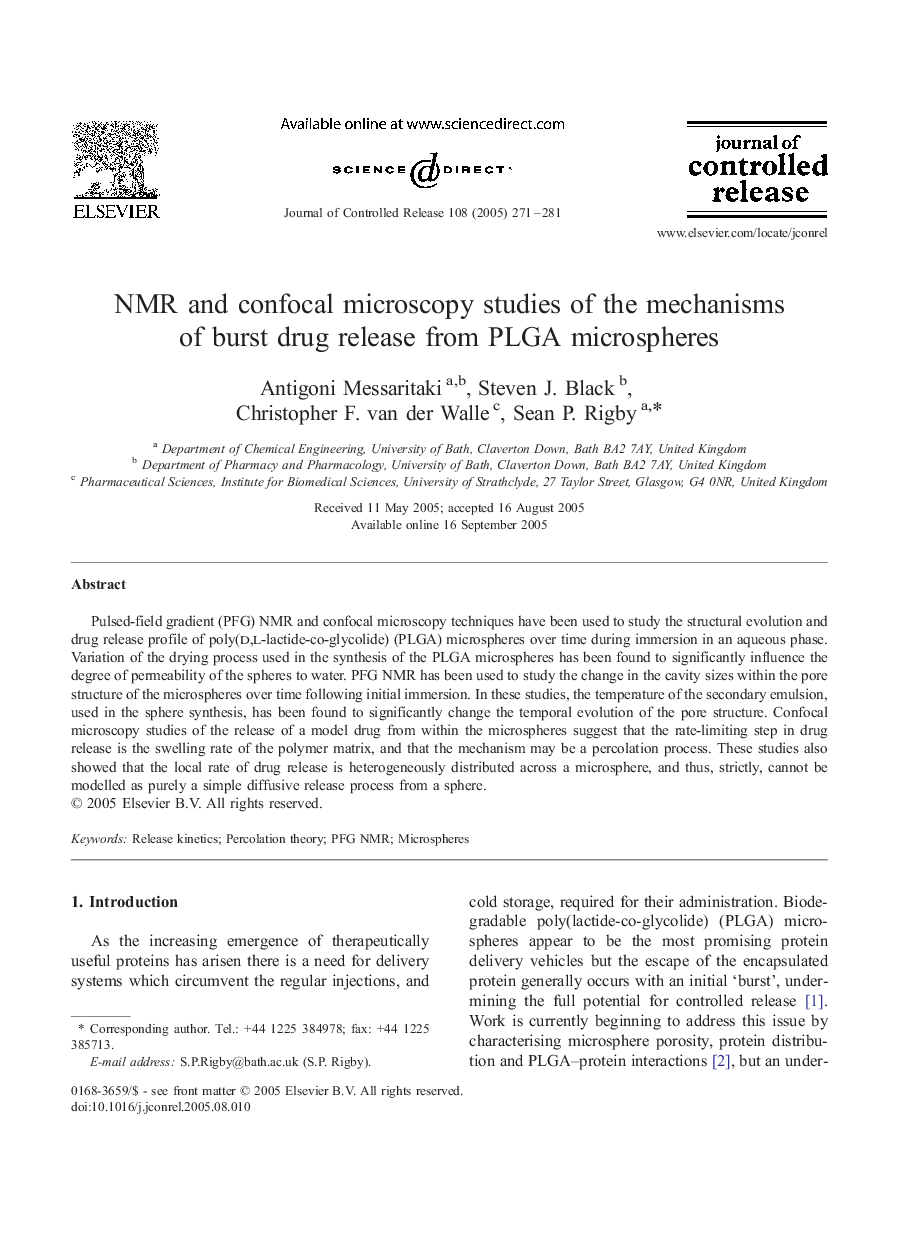| Article ID | Journal | Published Year | Pages | File Type |
|---|---|---|---|---|
| 9774616 | Journal of Controlled Release | 2005 | 11 Pages |
Abstract
Pulsed-field gradient (PFG) NMR and confocal microscopy techniques have been used to study the structural evolution and drug release profile of poly(d,l-lactide-co-glycolide) (PLGA) microspheres over time during immersion in an aqueous phase. Variation of the drying process used in the synthesis of the PLGA microspheres has been found to significantly influence the degree of permeability of the spheres to water. PFG NMR has been used to study the change in the cavity sizes within the pore structure of the microspheres over time following initial immersion. In these studies, the temperature of the secondary emulsion, used in the sphere synthesis, has been found to significantly change the temporal evolution of the pore structure. Confocal microscopy studies of the release of a model drug from within the microspheres suggest that the rate-limiting step in drug release is the swelling rate of the polymer matrix, and that the mechanism may be a percolation process. These studies also showed that the local rate of drug release is heterogeneously distributed across a microsphere, and thus, strictly, cannot be modelled as purely a simple diffusive release process from a sphere.
Related Topics
Physical Sciences and Engineering
Materials Science
Biomaterials
Authors
Antigoni Messaritaki, Steven J. Black, Christopher F. van der Walle, Sean P. Rigby,
